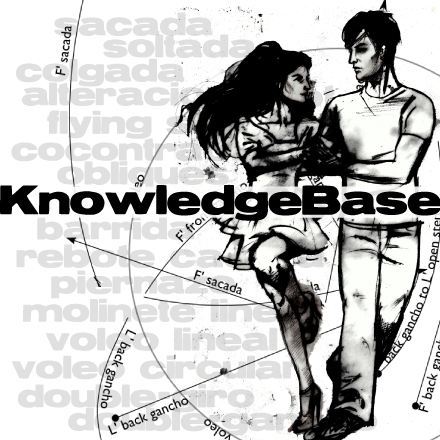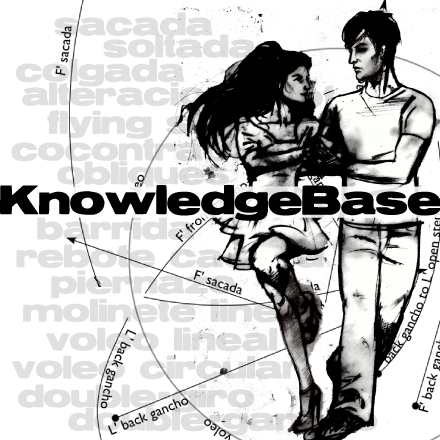See giro for disambiguation.
There are three giros: single-giro (Mark is in the center of the circle, Revel walks), calesita (single-giro with Revel in center of the circle, Mark walks), and double-giro (both partners walk on the circle).
Technique
In double-giro, the partners are moving lateral to one another in opposite directions. As in any contra movement, they must allow lateral shoulder flexion to adjust the embrace during every step, reconnecting the arch at the end of each step.
As in any other step, both dancers need to pivot at the beginning of each step to make sure their hips are correctly aligned to the direction of their step with the base leg in external rotation.
The partners endeavor to project at the same time and to transfer weight at the same time.
Mark
- As in any contra step, the Mark must project the Revel before moving his own arc.
- The Mark uses his obliques to pivot between steps, produce lateral intention for the Revel.
- To convey continous lateral intention he must keep arm abduction constant despite the lateral shoulder flexion he must make to adjust the embrace around the contra motion.
- The Mark may always modify the pattern of his steps from default molinete.
Revel
- Walk on default molinete pattern with steps of equal size and timing, unless the Mark accelerates you or changes the pattern.
! Do not cheat by doing a back cross instead of a complete back ocho. (Unless back cross is marked.)
! Do not automatically accelerate or shorten your side steps. (Unless marked.) - Be sure to create the first projection and second projection in every step to create spacetime for improvisation.
- Make sure your back step lands on the perimeter of the circle, not outside.
! Lack of control in back steps can pull your Mark off balance. Be aware that your steps are not tangents to a circle, they are on the circle. If your side step is tangent to the circle, you will go outside the circle, and then have to make a huge pivot into your back step to get back onto the circle. If your side step is truly on the perimeter of your circle, you’ll have a much better chance of pivoting enough to place your back step where it belongs. - Make sure that your hips fully face the mark in side step.
! Don’t take shortcuts like turning toward your front step too soon. If your side step is wonky and unpredictable, you abrogate the improvisational possibilities.

Improvisation
The most obvious variation of double-giro is to modify the pattern relation between the partners’ steps.
Any movement which involves both dancers stepping can be used to vary double-giro.
-
- rebote
- parada
- ocho cortado
- sacada
- moving ganchos in which both partners step











